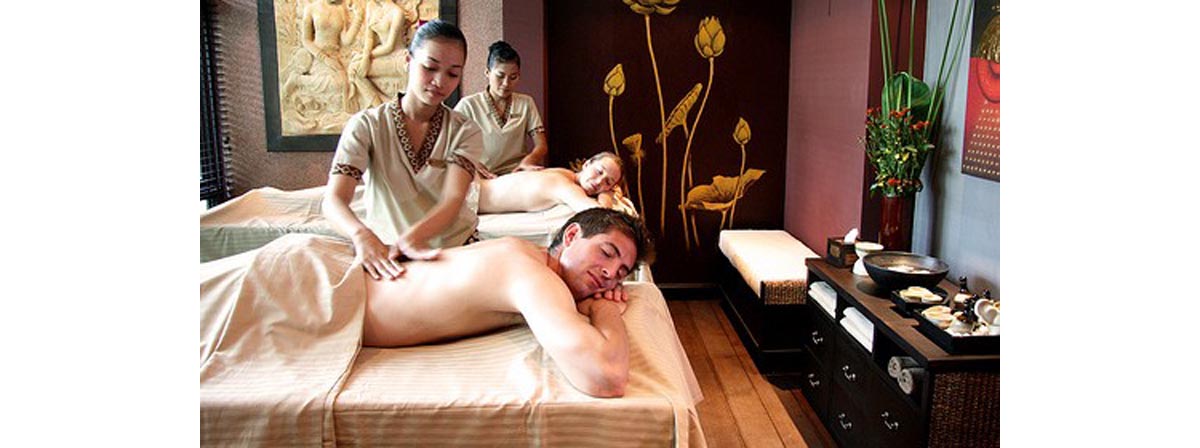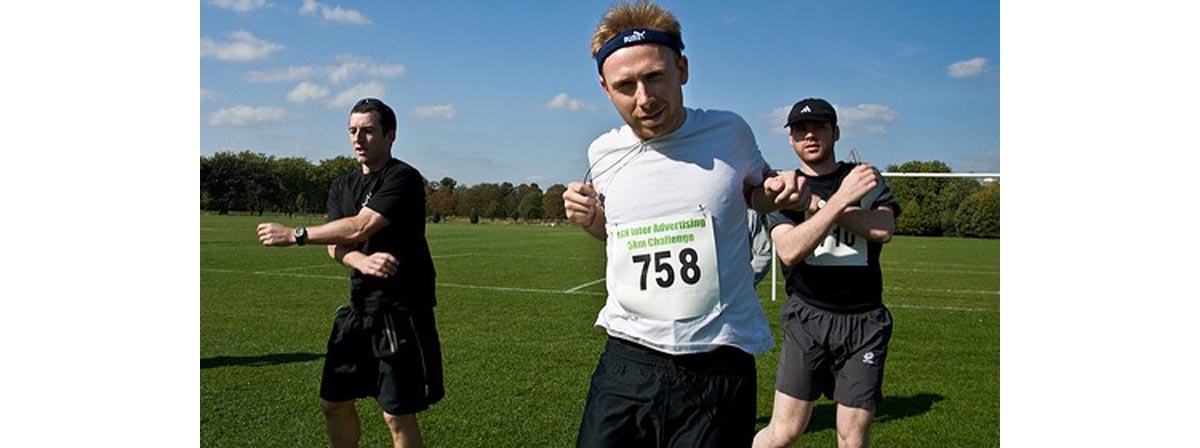We all know that a good rub down makes most muscle aches and pains go away quickly. Therapeutic massage has been used for thousands of years to help athletes, laborers, and anyone who has money to pay the masseur or masseuse overcome the effects of excessively strenuous exercise and muscle tension.
The benefits of massage stretch far beyond relieving achy muscles, however. Massage also reduces inflammation, stimulates circulation, and the benefits of massage for achy muscles even have a scientific explanation, thanks to five especially brave volunteers for a study conducted at McMaster University in Hamilton, Ontario.

Canadian Scientists Biopsy Muscles to Measure Effects of Massage
Dr. Mark A. Tarnopolsky of McMaster University's medical school recruited five male athletes willing to have their thigh muscles biopsied, not just once but three times, before and after exercise and massage. On the first visit to the lab, the researchers took a tissue sample of each athlete's thigh muscles at rest. On the second visit to the lab, the researchers had the volunteers ride a stationary bike until they were exhausted.
The volunteers then received 10 minutes of therapeutic massage on one leg, but not the other. The doctors took a muscle biopsy of both legs immediately after the massage, and then again to monitor tissue repair after the volunteers had 2-1/2 hours of rest.
Massage Helps Muscles Repair Themselves
Looking at tissue samples under an electron microscope, Dr. Tanopolsky and colleagues found that massaging the muscle increased the activity of mitochondria, the tiny "mini-organs" within the cell that generate energy. Increasing the cell's production of energy allowed it to absorb more glucose, water, and amino acids. The cell then uses the glucose and water to make glycogen. Glycogen is stored energy, but it is also the compound that "pumps up" muscle after it has been exercised. The cell uses the amino acids to make the proteins it needs to repair fibers that are broken down during heavy exercise, which leads to muscle gains that last.
Massage Relieves Pain Without Interfering with Muscle Recovery
But that isn't the only benefit of massage. Tarnopolksy and colleagues also found that massage reduces the production of inflammatory compounds known as cytokines. However, it doesn't stop the production of all the cytokines. Having a massage only stops the production of the cytokines that cause pain. Massage allows a partial process of inflammation to proceed so that old muscle fibers can be broken down and new, stronger muscle fibers can take their place. Aspirin and ibuprofen likewise short-circuit the production of pain-causing cytokines, but they also interfere with the production of stronger muscle — making massage a better choice if you want to hold onto the gains you have worked so hard for.
With the work done McMaster University in Canada, science now knows not only that sports massage works, but also exactly why sports massage works. But it turns out that massage is not the only way to stop the processes that cause pain and inflammation after vigorous exercise. What else do you need to know?
A Light "Cool Down" Exercise Session May Be As Useful As Massage
Dr. Lars Andersen of the (Danish) National Research Center for the Working Environment in Copenhagen speculated that massage, while definitely useful in relieving pain after workouts, might not be the best way to relieve pain after a heavy exercise session. He recruited 20 women to do shoulder exercises on a resistance machine similar to those one would see in any modern gym.

Using Massage and Stretching Exercise After Training the Trapezius
The women who participated in the study did an exercise that involves shrugging the shoulders while pressing against a resistance band, an exercise that specifically works out the trapezius muscle. The workout involved eccentric exercise, which is not a workout along the lines of extreme ironing or putting on a glider suit and jumping off Mount Everest, but rather just using the muscles to push away from the body, in this case increasing circulation to the muscles in the process.
The resistance was chosen to cause exhaustion of the muscle after just 10 repetitions, so that the women were almost certain to experience muscle pain after the workout was completed. And cause muscle pain it did, with the women rating, on average, their muscle pain at 0.8 on a scale of 1 to 10 before the workout and 5.0 on a scale of 1 to 10 when they came back to the lab two days later.
At the second session, the women participating in the study were given a therapeutic massage on one shoulder, or they were asked to perform a mild, stretching exercise for the other shoulder. Some women were asked to do the stretching exercise first, and some were given the therapeutic massage first. Ten minutes later, the women were asked to rate their pain in both shoulders.
Exercise Ever-So-Slightly Better for Pain Relief in One Study
On average, the women in Dr. Andersen's study reported that the stretching exercise reduced their pain by 0.8 units on a scale of 0 to 10 and the therapeutic massage reduced their pain by 0.7 units on a scale of 0 to 10. These results, Andersen opines, indicate that exercise is as beneficial as massage for treating post-workout pain.
Personally, I would interpret the study as confirming that both methods work fairly well, and both are better than either doing nothing or popping painkillers to reduce post-workout pain and sore muscles. Dr. Andersen's method of measuring pain relief was purely subjective, whereas the McMaster University study involved tissue samples. Dr. Andersen in Denmark worked with female volunteers, and Dr. Tarnopolksy in Canada worked with male volunteers. Dr. Andersen invited his test subjects to get treatment for their pain two days after their workout, and Dr. Tarnopolsky arranged for his test subjects to receive a massage immediately after their workouts.
But the bottom line of both studies seems to be, if you can't afford sports massage, stretching over the next day or two will also help. But if you can, it's a nice way to relax and a good way to support your muscle gains while preventing discomfort after an intense workout.
- Andersen LL, Jay K, Andersen CH, Jakobsen MD, Sundstrup E, Topp R, Behm DG. Acute effects of massage or active exercise in relieving muscle soreness: Randomized controlled trial. J Strength Cond Res. 2013 Mar 21. [Epub ahead of print].
- Crane JD, Ogborn DI, Cupido C, Melov S, Hubbard A, Bourgeois JM, Tarnopolsky MA. Massage therapy attenuates inflammatory signaling after exercise-induced muscle damage. Sci Transl Med. 2012 Feb 1. 4(119):119ra13. doi: 10.1126/scitranslmed.3002882.
- Photo courtesy of Tara Angkor Hotel by Flickr : www.flickr.com/photos/taraangkorhotel/5918125059/
- Photo courtesy of Drew Leavy by Flickr : www.flickr.com/photos/drewleavy/2898503752/

